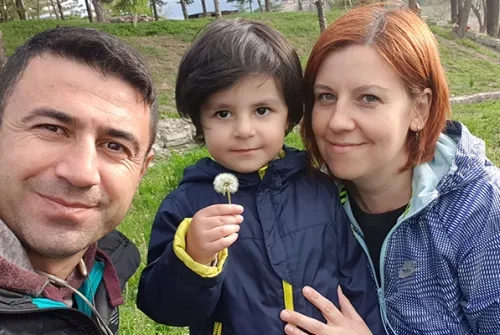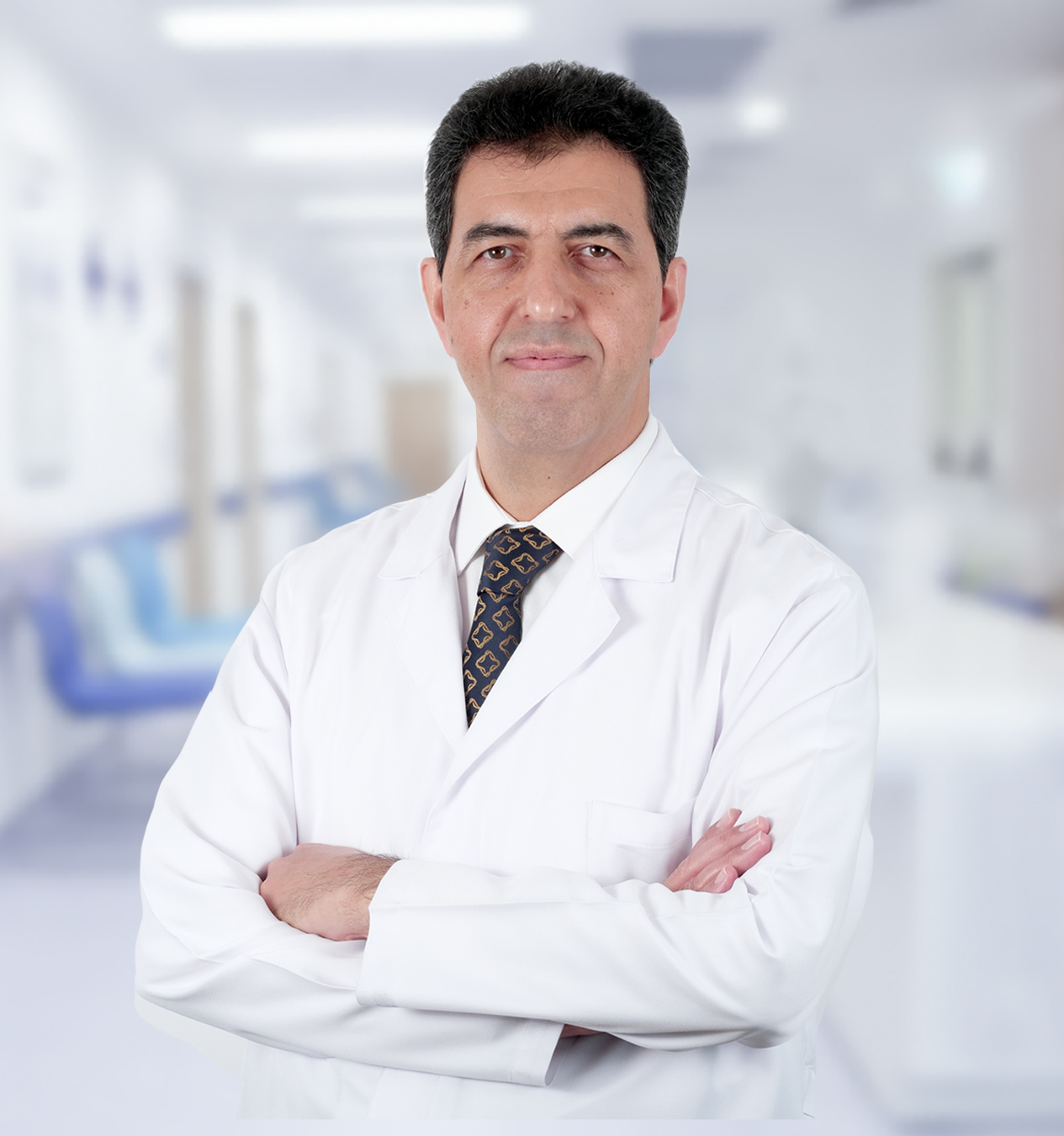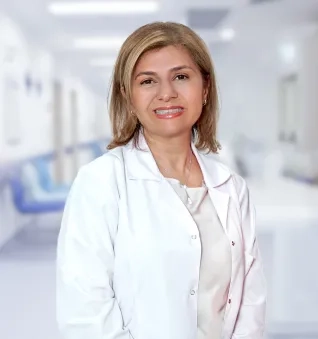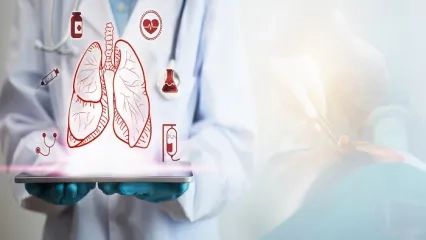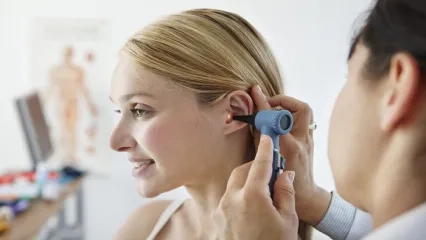Alo Yeditepe
Alo Yeditepe
Treated For Asthma For Two Years But Has Had A Tumour In Her Trachea
Hilal Karaman, a mother of two children, began experiencing shortness of breath about two years ago. The complaints of the young woman were thought to be psychological. Karaman, who had gradually increasing shortness of breath, was diagnosed with asthma after a while. The CT scan result of Hilal Karaman, who had used asthma drugs for 2 years, surprised everyone who saw it. The young woman, who was understood to be unable to breathe due to a tumour obstructing 95 per cent of her trachea (windpipe), came to Istanbul. After surgery performed here, she regained her health.
36-year-old Hilal Karaman living in Eskisehir began to experience shortness of breath exactly 2 years ago. The complaints of the young woman, whose husband served as a military officer in Tunceli, were thought to be psychological. The young woman, whose shortness of breath continued to increase day by day, was diagnosed with asthma this time. The young woman, who started using asthma medicines, became unable to climb stairs over time. The young woman who ended up in the hospital again also failed a respiratory test. Karaman, whose complaints continued to increase despite the asthma medications, had a CT scan this time. The CT scan result was surprised everyone who saw it.
Regained Her Health After About 7 Hours of Surgery
A 3-centimeter tumor was detected in the young woman's trachea, which clogged 95 per cent of her windpipe and covered the right half of the thyroid gland. The young woman who learned her illness came to Istanbul for surgery. She was examined by Prof. Dr. Sina Ercan who is Head of the Department of Thoracic Surgery at the Yeditepe University Hospitals, and then was taken to surgery. The young woman, who had difficulty even in speaking due to shortness of breath, regained her health after about 7 hours of surgery. Karaman said she returned her home with singing.
“It Frightened Me To Have Surgery During The Epidemic”
Hilal Karaman, who stated that her respiratory complaints increased even more when climbing stairs, described her hard times she experienced with the following words: “I have a 3.5-year-old son. I couldn't carry him on my lap. I was so surprised when I first heard that there was a tumor in my trachea. I wasn't expecting anything like this. I thought that the dose of my asthma medication would be increased and I would recover. Due to the coronavirus outbreak, it was decided that my surgery could not be performed in Eskişehir. So, they told me they would refer me to a sterile hospital in Istanbul and I came to Istanbul. Thank goodness I'm fine now.”
“I Could Not Climb Up Stairs, I Have Started Running”
Hilal Karaman, stating that she returned to her home with singing after the surgery, said, “I am a person who loves to talk. I was thinking that ‘Do they realize that I could hardly breathe?’ while I was explaining something to them. This situation made me very upset, believe me. But I had surgery and regained my health. I was singing on the way home about a week after the surgery. My little son asked me after the surgery, ‘Mom, can we run together now?’ Because I kept telling him, ‘I can't run, son.’ We played in the park after the surgery, we were able to run up the stairs. I'm very happy now. ”
Acar Selçuk Karaman (38), who stated that his wife had a shortness of breath for 2 years, said, “My wife's quality of life has reduced, she could not breathe, she could not go up the hill, she could not even walk. We were driving everywhere. ”
“Patient Carried Risk of ‘Drowning’ ”
Yeditepe University Koşuyolu Hospital Thoracic Surgery Specialist, Prof. Dr. Sina Ercan, who performed the operation of the young woman, reminded that Hilal Karaman had surgery in the end stage of the disease. Prof. Dr. Sina Ercan, reminding that there unfortunately are occasional delays in the diagnosis of such tumors, stated, “When Mrs. Karaman came to us, the disease was at the end stage. 95 percent of the patient's trachea was obstructed. Diagnosis of tracheal stenosis may be delayed. Their findings can be interpreted differently. It had been thought that Mrs. Karaman’s shortness of breath might had been psychological. Later on, she was diagnosed with asthma when her complaints did not go away but persisted. The condition of many patients with this condition is confused with other diseases that can lead to shortness of breath, such as asthma or COPD. She was on medication for a long time, but of course she did not avail herself of it.”
“There Will Be A Post-Operative Radiotherapy Process”
Dean of the Yeditepe University Faculty of Medicine, Prof. Dr. Sina Ercan, who explained that the biggest risk in surgery is damage to the vocal cords, gave the following information about the surgery:
“The biggest risk is that the tumor cannot be removed completely and the nerves leading to the vocal cord are damaged. Therefore, it is important to be able to remove it completely at the first time and to protect the motor nerves and vocal cord functions. Our patient's tumor was more than 3 centimeters in diameter. Considering that the diameter of the trachea was around 2 centimeters in an adult, the tumor covered 95 percent of the trachea and extending outside of it into the thyroid gland. These patients are given radiotherapy treatment after surgery, eliminating the possibility of long-term recurrence of the disease. Mrs. Karaman has no problem right now, and we do not expect her to experience this disease again.”
How Were The Vocal Cords Protected?
Prof. Dr. Zeynep Alkan, ENT and Head and Neck Surgery Specialist, stated that while removing the tumor affecting the right half of the trachea and thyroid gland, they protected the nerves that control the movement of the vocal cords. Yeditepe University Koşuyolu Hospital Specialist Prof. Dr. Zeynep Alkan, explaning that various types of vocal problems may occur in these types of surgeries, said, “We took care to protect the mobility of the vocal cords while removing the tumor”. A 3.5-centimeter portion of the trachea was removed with the tumor. Afterward, healthy tissues were stitched together end to end. The biggest risk in this type of surgery was damage to the nerve leading to the vocal cords. But, we were able to protect it by both using the nerve monitor and by visually tracking the nerve, and by tediously separating it from the tumor. Now, our patient can adjust his breathing and even sing. Had the nerve to the vocal cords not been protected, vocal cord paralysis would have been inevitable. In a unilateral vocal cord paralysis, hoarseness, difficulty swallowing, moving of the food down the esophagus and related pneumonia attacks could have been seen; in a bilateral paralysis, on the other hand, breathing difficulties could have been seen.”
Press Coverage: milliyet.com | cnnturk.com | aksam.com | hurriyet.com | acunn.com | msn.com
About
Faculty and Year of Graduation:
Marmara University, 1993
”
See Also
- What Are Head and Neck Cancers? Diagnosis and Treatment
- His Trachea was 95 Percent Closed, He Returned to Life with 10 Hours of Surgery
- He Couldn't Breathe; He Regained His Health with the Application of 3 Different Special Surgical Techniques Together
- Voice Can be Lost If Tracheal Stenosis is Not Detected Early
- Ear Pain During Flight Can Be a Sign of Some Diseases!
- Unable to Speak Due to Her Illness, Sibel: I Could Not Tell My Children 'I am Here' During the Earthquake
- They Said He Could Never Speak Again Due to Laryngeal Cancer, But Today After the Surgery He Underwent, He Can Speak!
- Hearing Health
- Nasal Sprays Can Be Addictive!
- Chance of Treatment in Patients Who Have a Tube Inserted in Their Throat to Breathe
- Young Man Who Lost His Voice Due to Tracheostomy Regained His Voice After Months
- Can Infection Cause Permanent Hearing Loss?
- The Cause of Shortness of Breath May be Trachea Stenosis
- It Is Possible to Prevent Possible Complications of Intubation
- The Tumor in the Trachea was Removed Without Damaging the Vocal Cords
- He Was Ashamed to Speak, and He Was Reborn with His New Voice
- Survived from Tumor Covering Half of Larynx With Closed Surgery
- Beware of hoarseness lasting longer than 15 days!
- Survived Coronavirus, Had Windpipe Blockage Months Later, Returned From Death
- Don’t Let Allergic Rhinitis Spoil Your Life
- The Young Man Whose Trachea Was Completely Blocked After An Accident Regained Both His Health and His Voice
- What is Intubation?
- Lung Cancer
- Nose Bleeding
Alo Yeditepe

